Radiant, even-toned skin is on everyone’s wishlist. But day-to-day life—including sunny outings, lifestyle shifts, and even hormonal changes—can show up on your skin in the form of dark spots and discoloration.
While common, these spots might raise a few questions: Why do they appear? How can you get rid of them? And finally, how can you prevent them?
Today, we’re answering these questions along with expert, science-backed advice for a glowing, uniform complexion. Let’s get started.
Why do dark spots appear?
Our skin’s pigment is created by tiny cells called melanocytes, located in the epidermis (the outermost layer of skin). Their job is to produce melanin, the pigment that gives skin its color and helps protect it from solar radiation.
When triggered by certain environmental, health, and lifestyle factors, melanocytes get thrown off balance—producing too much or too little melanin. The result? Visible changes in skin tone, such as dark spots, light spots, discoloration, and overall uneven pigmentation.
Today, we’ll focus on dark spots, especially sun spots.
What are dark spots on the skin?
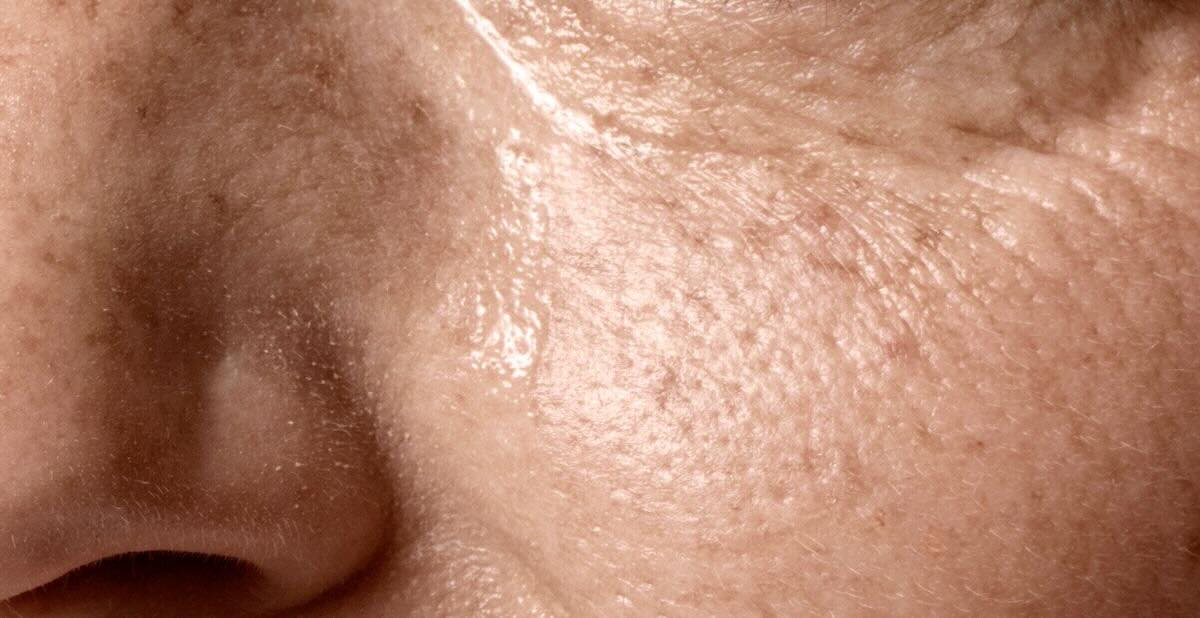
When melanocytes produce excess pigment, dark spots form. These small hyperpigmented areas can appear in different ways, with different causes:
Sun spots
Here, unprotected sun exposure is the most common trigger. When exposed to ultraviolet (UV) rays, the skin increases melanin production as a defense mechanism. Sometimes, a temporary bronze or deepening tone is the result, but unprotected exposure can also lead to sun spots over time.
These flat brown or black spots often appear on the face, neck, or hands, often with a slightly irregular shape. You might notice them more in the fall, after a summer well-spent.
Freckles
Freckles are harmless spots caused by increased melanin. They can be genetic or develop later in life. While they’re benign (and, not to mention, beautiful), it’s always a good idea to keep an eye on their shape and size, consulting a dermatologist if you notice changes.
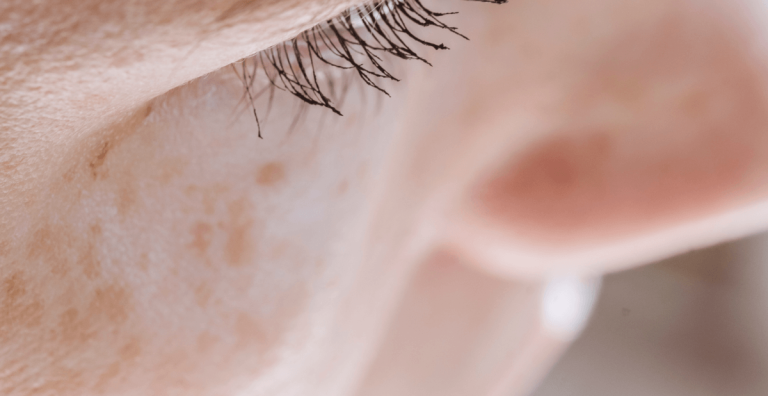
Post-inflammatory hyperpigmentation (PIH)
These spots form after skin inflammation or injury, such as acne. Depending on the case, they may fade over time or persist without targeted care. Although it’s more common in brown or black skin tones, PIH can occur in all tones.
Can dark spots be removed? The good news is that many types of dark spots can improve with the right skincare routine and treatments. Proven skincare ingredients, daily sun protection, and a visit to your dermatologist are the best first steps.
How to help reduce dark spots
Dark spots may be part of your skin’s story, but they don’t have to define it. With the right products, you can help minimize them now and decrease the appearance of more down the road.
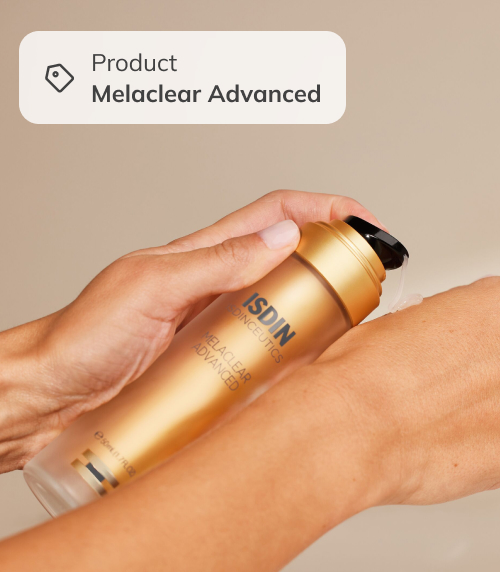
Spot-correcting serum
Melaclear Advanced works morning and night to help visibly reduce dark spots. Including tranexamic acid, niacinamide, and a corrective complex, it helps exfoliate and brighten for a more even skin tone.
In our study, it was shown to reduce facial hyperpigmentation by 63% after 3 months of use.*
High SPF tinted sunscreen
Enter Eryfotona Ageless. This innovative mineral sunscreen goes beyond protection, helping to correct and unify. Inside, innovative DNA Repairsomes® work to repair existing sun damage.
Plus, its lightweight formula includes antioxidants to combat free radical damage and peptides to reduce visible signs of photoaging—all while offering natural coverage.
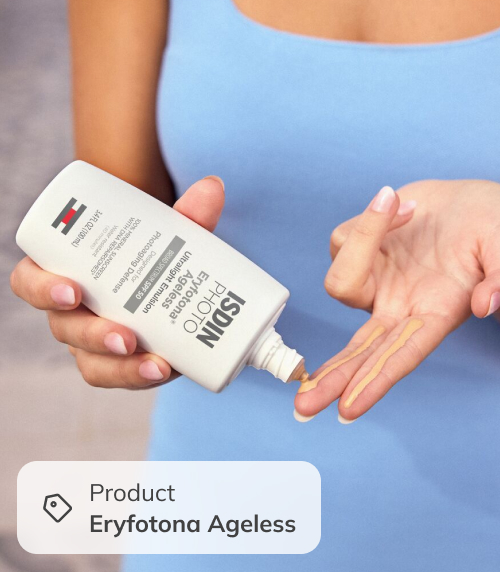
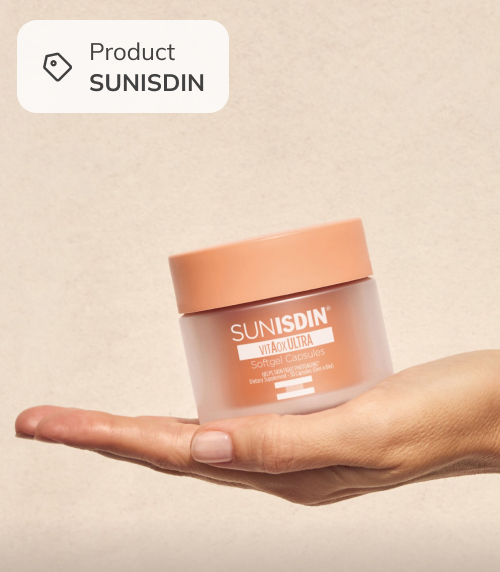
Skin-boosting supplement
To go above and beyond, opt for a daily oral supplement designed to support skin health from within. Rich in antioxidants like vitamin C and selenium, SUNISDIN helps protect skin against oxidative stress caused by UV radiation and other factors.
It’s the perfect complement to your topical routine for healthy, radiant skin.
How to avoid more dark spots
Healthy skin habits are key to minimizing new spots or patches. Here are a few simple steps you can take:
- Apply sunscreen daily: Even on cloudy days, UV rays reach the skin. Choose a broad spectrum, high SPF sunscreen and reapply every two hours.
- Limit sun exposure: Avoid peak UV hours (10 a.m. – 4 p.m.) whenever possible.
- Use extra protection: Hats, sunglasses, and protective clothing can also help shield your skin.
- Add brightening skincare products: Ingredients like tranexamic acid, niacinamide, and vitamin C are proven to help even skin tone and reduce discoloration.
All in all
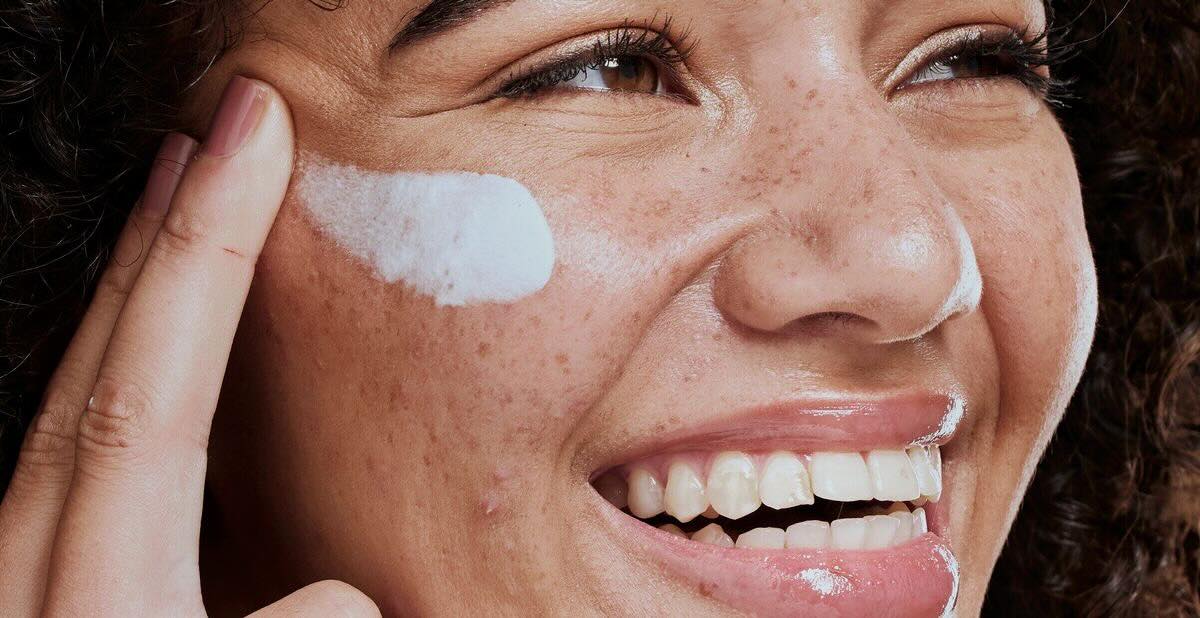
Dark spots are a common concern, but with the right knowledge and care, you can soften their appearance and help keep new ones off the horizon. A combination of targeted skincare, daily sun protection, and healthy habits makes all the difference.
Remember: your skin tells your story, and every step you take toward caring for it is a step toward a brighter tale.


